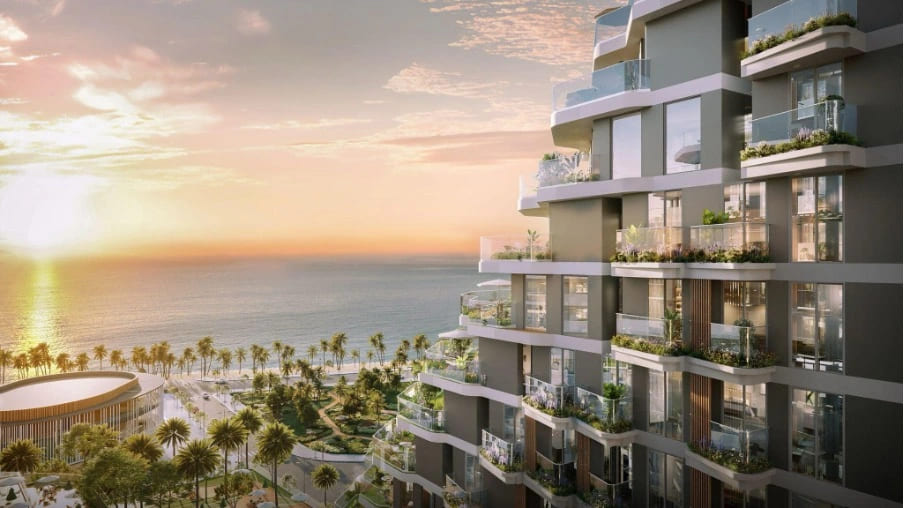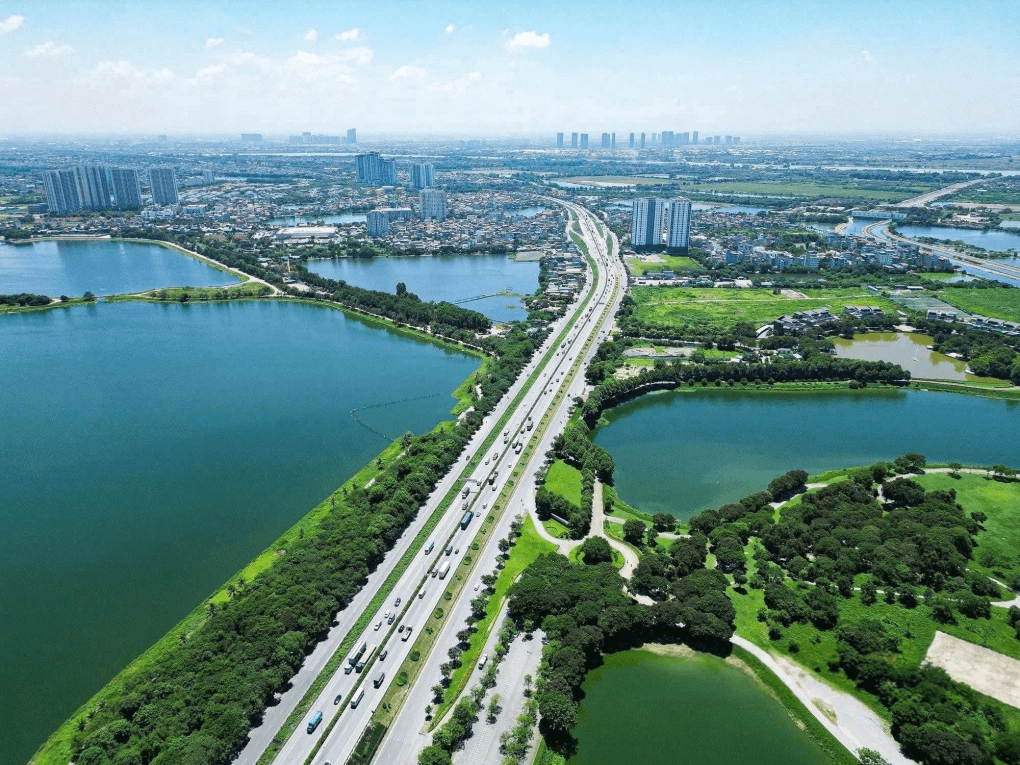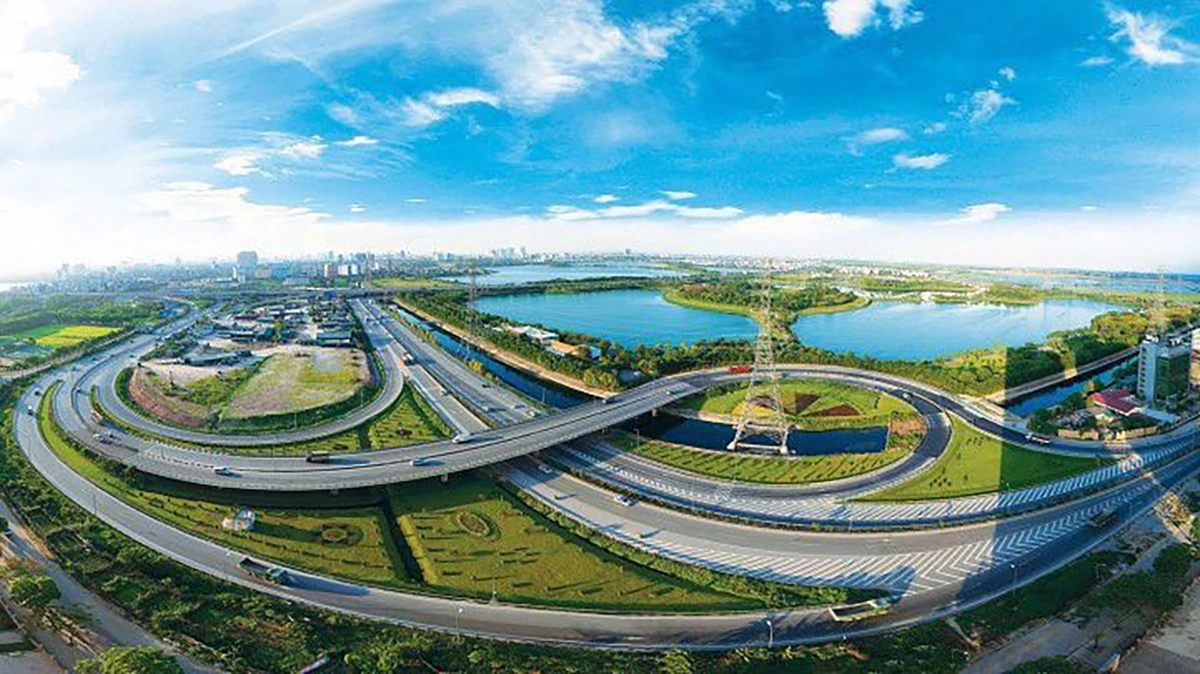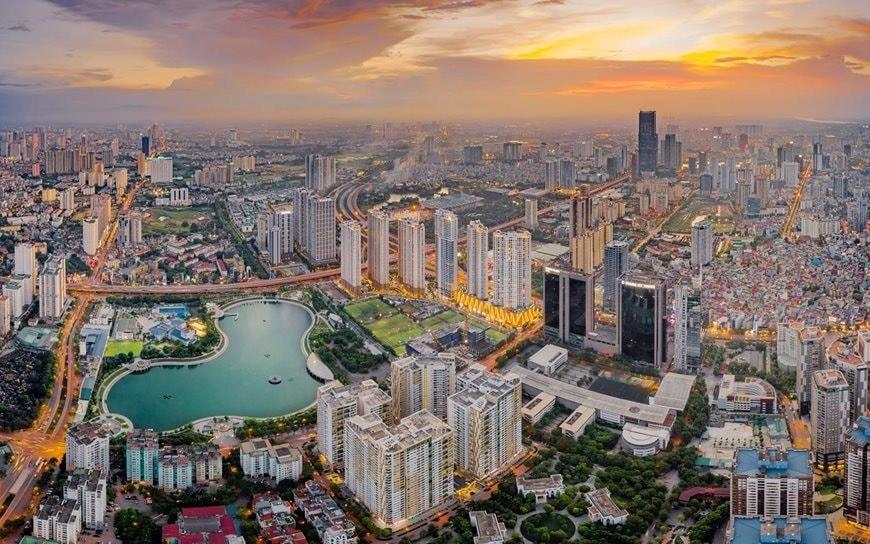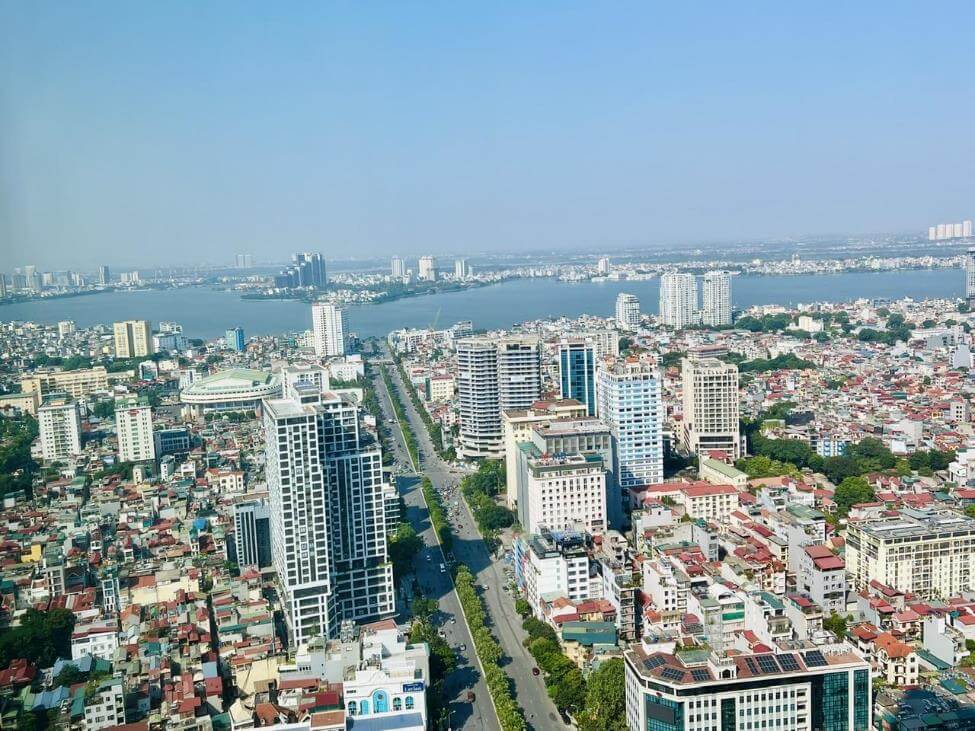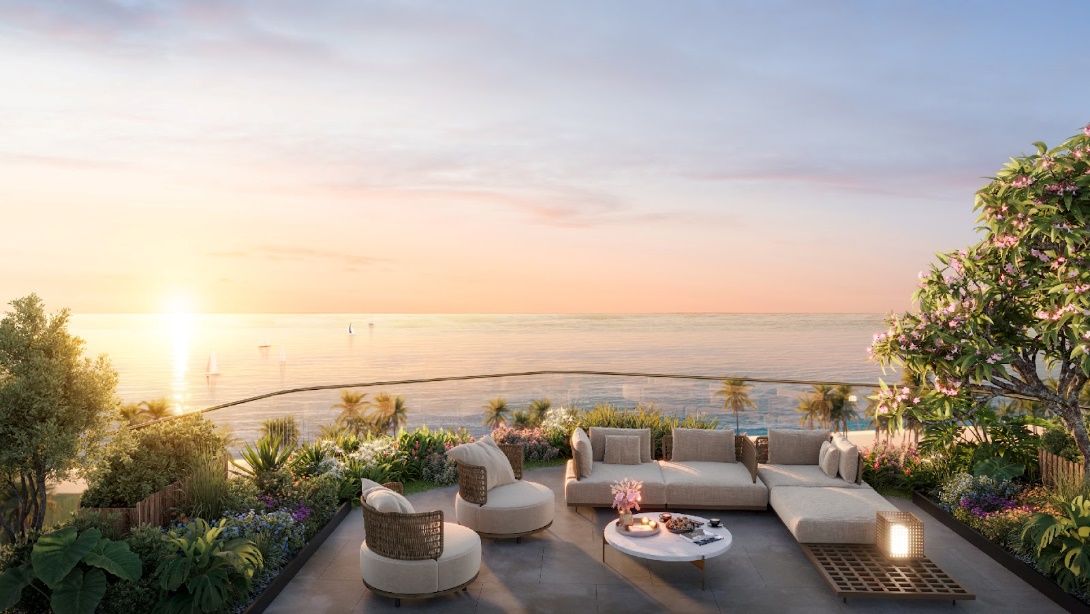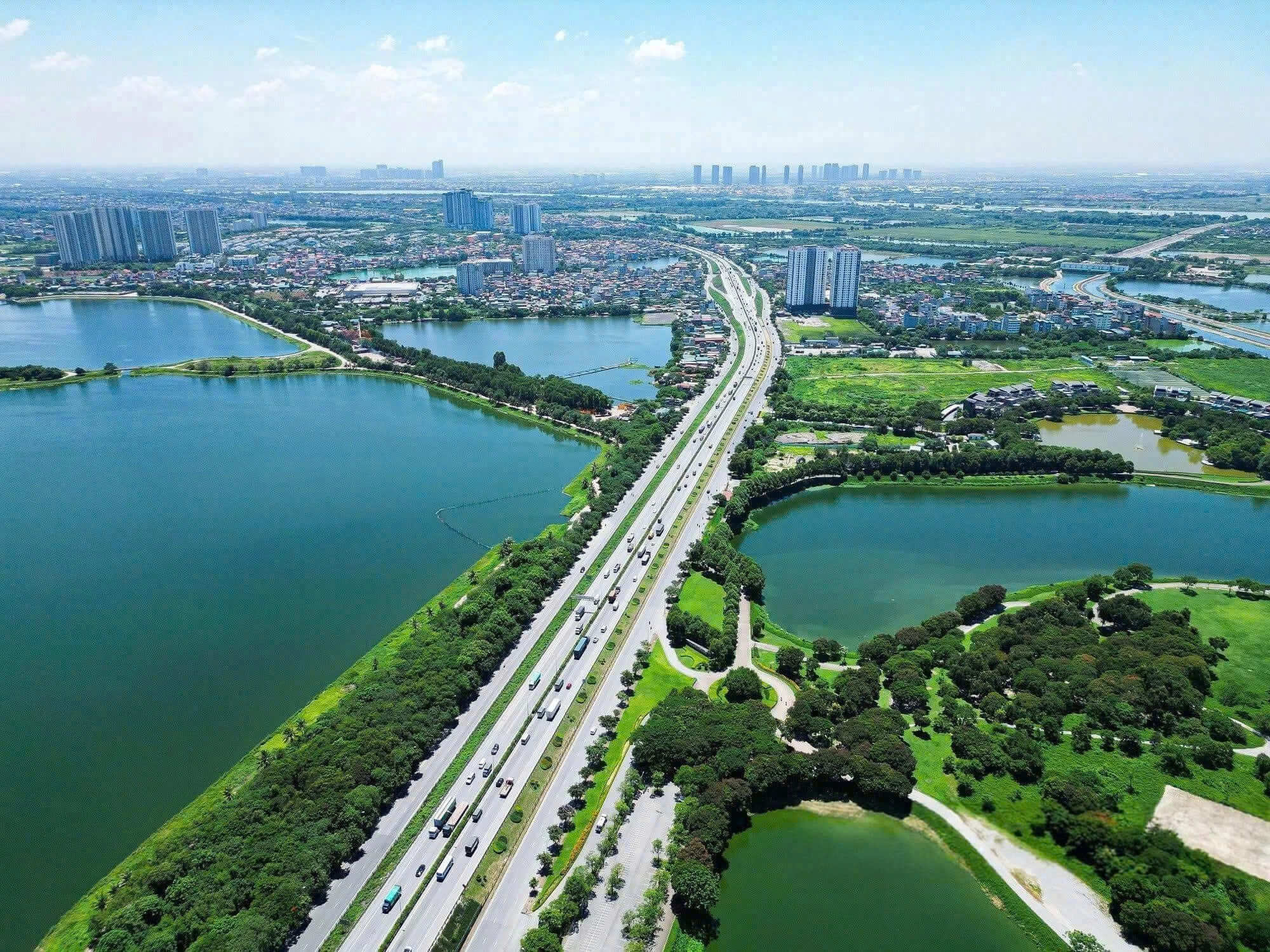Amid global fluctuations, domestic cash flows are strongly pumped into the economy, creating the premise for a new growth cycle – where real estate continues to play a role as a sustainable and attractive investment channel.
- APEC – “leverage” to accelerate real estate in the host region
- Meypearl Harmony Phu Quoc is honored as an apartment complex best coastal 2024
A volatile economic cycle
Entering 2025, the world economy faces a new cycle full of uncertainty. The event that sparked this volatile future was the re-election of billionaire Donald Trump as US President, followed by a series of tough trade policies.
On April 2, President Trump announced the new US tariff policy. Accordingly, the US imposed reciprocal import tariffs on more than 180 trading partners. About half of them were subject to a common tax rate of 10% from April 5. Other major trading partners are subject to tariffs ranging from 15% to nearly 50% from April 9.
Vietnam is subject to a rate of 46%, among the countries with the highest tariffs along with China, Cambodia, Indonesia, and Myanmar.

Photo: Dan Viet
Faced with the above challenges, Vietnam remains steadfast in maintaining its GDP target of 8% or more in 2025. To achieve this, a series of economic and financial policies have been activated. The first is the strategy of promoting reform of the apparatus and streamlining administrative procedures, cutting a series of investment, licensing, tax, customs processes, etc. to help businesses save costs and shorten project implementation time.
In addition, public investment has become a spearhead to stimulate demand with a total planned capital for 2025 of up to VND 791,000 billion (equivalent to 6.4% of GDP), the strongest increase in the past 10 years.
Key projects such as the North-South Expressway Phase 2, Long Thanh Airport, Hanoi Ring Road 4 and a series of routes connecting the key economic regions in the South have all been accelerated, creating a spillover effect on infrastructure and real estate.
Along with that, commercial banks have been allowed to expand credit room since the beginning of the year, especially for the production – business sector, real estate serving real housing needs and infrastructure construction. floors.
According to the State Bank, by the end of March 2025, the economy’s credit balance reached more than VND 15.9 million billion, an increase of 17.60% over the same period in 2024. This is a signal that cash flow is gradually returning to the market more strongly and abundantly.
Investment cash flow exploits potential lands
In the context of latent inflation, low savings interest rates and unpredictable fluctuations in financial channels such as gold or stocks, investors tend to choose real estate as a channel to preserve and increase value in the long term, especially in areas with advantages in infrastructure, tourism and clear legal ownership.
After the adjustment period, the signs of a positive market began to become clear in 2024 with impressive growth in both supply and transactions. translation.
According to data from the Vietnam Real Estate Brokers Association, in 2024, the entire market recorded nearly 81,000 products for sale, an increase of more than 40% compared to 2023; and more than 47 thousand successful transactions, equivalent to an absorption rate of 72%.
Also according to data from the Association of Brokers, in 2024, apartments will continue to play a leading role, accounting for about 70% of the total new housing supply. In particular, Hanoi apartments lead the growth rate of selling prices with a record increase of 72.4%.
Notably, since the end of last year, the investment wave has begun to shift away from Hanoi. According to research, 66% of Hanoians surveyed are starting to be interested in real estate in the South.

Meypearl Harmony Phu Quoc, the symbolic tower welcoming APEC 2027 in the Meyhomes Capital Phu Quoc metropolis
One of the focal points of this investment shift is Phu Quoc – the largest island in Vietnam – which is making a strong comeback on the real estate investment map with clear signs of recovery in the first quarter of 2025.
According to the Kien Giang Department of Tourism, in the first two months of the year, the number of international visitors to Phu Quoc The population of Phu Quoc reached more than 1.4 million people, an increase of nearly 60% in the first quarter of the year, and room occupancy at high-end resorts reached over 75%.
In addition, a series of key infrastructure projects are being accelerated, such as the expansion of Phu Quoc International Airport, the upgrading of Duong Dong seaport and the Southwest coastal route, helping to increase connectivity and trigger a new price increase cycle for real estate on the Pearl Island.
With the spectacular changes in infrastructure and economy in recent years, Phu Quoc was chosen as the host of the Asia-Pacific Economic Forum (APEC) in 2027.
Not only a tourist destination, Phu Quoc is being oriented to become a livable coastal city with a modern residential – resort – commercial ecosystem. Large enterprises such as Tan A Dai Thanh, BIM Land, Sun Group, Vingroup, … have simultaneously restarted urban areas and resort complexes, showing confidence in the strong recovery of the Pearl Island.
Currently, many investors are also targeting projects with full legal documents, which can be invested in the long term, notably Meypearl Harmony, the symbolic tower welcoming APEC 2027 in the Meyhomes Capital Phu Quoc urban area.
The most outstanding feature of this project is its central location, long-term legal ownership, and systematic and synchronous planning from the beginning, which can become a new investment channel for the Pearl Island.
Many experts assess that 2025 opens a cycle full of challenges but also full of opportunities for visionary investors. Opportunities will come to places with a solid legal foundation, well-planned planning, developed infrastructure and long-term profitability such as Phu Quoc in general and the Meypearl Harmony project in particular.
Topic: Meypearl Harmony Phu Quoc project information, Kien Giang real estate news, Phu Quoc real estate
Phuong Vu
according to Thanhnienviet


